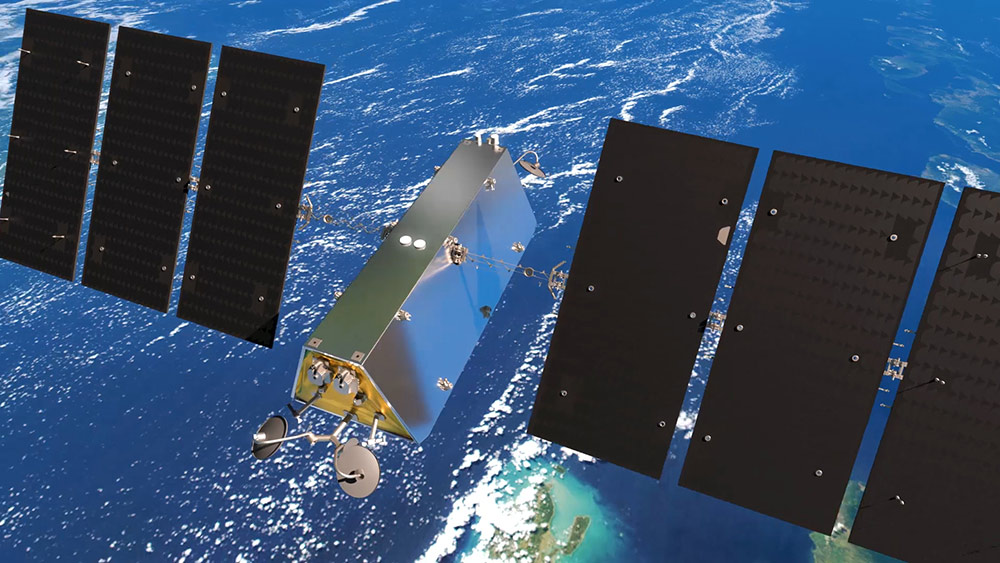
日益擁擠的近地軌道空間迎來了一位新朋友。2月9日,加拿大衛星運營商Telesat宣布,其計劃于2023年底前發射近300顆低軌道衛星,以在全球范圍內提供高速互聯網服務。
但Telesat表示,該公司尚未“最終敲定”由泰雷茲阿萊尼亞太空公司制造衛星的全部融資。由于沒能籌措足夠的資金以建設大型衛星網絡,先前的努力也被迫叫停,其中,軟銀集團旗下的OneWeb于去年申請破產(不過該公司后來獲得了新融資)。
“全面建設的鋪開和最終的衛星部署時間表,取決于項目融資的進展。”Telesat在一份聲明中表示。
低軌道衛星通常位于地球上空幾百到1000英里左右的位置。無論是否成功,Telesat公司的努力標志著低軌道衛星互聯網這一領域迎來了第四位入局者。在此之前,埃隆?馬斯克SpaceX公司的星鏈服務已經在北美部分地區以每月100美元的價格提供太空聯網服務。剛走出破產困境的OneWeb現在由英國政府和其他投資者所有,也已經發射了100多顆衛星,并計劃在2022年底前發射近650顆衛星。杰夫?貝佐的柯伊伯項目官宣了計劃,但尚未開始發射衛星。這些新的嘗試也與傳統衛星服務構成了新的競爭——傳統衛星位于更高的軌道,如在世界某些地區提供互聯網服務的Viasat,價格相當昂貴。
與競爭對手不同,Telesat并不打算直接向普通家庭消費者提供“光速”服務。該公司表示,其受眾定位是固定和移動網絡運營商、航空和海事用戶、企業客戶和政府部門。個人消費者需要向這些運營商購買服務。
四家衛星互聯網服務公司都在想辦法,避免重蹈比爾?蓋茨支持的Teledesic公司以及銥衛星和環球之星的覆轍。上世紀90年代,這些公司制定了一系列宏大計劃,但隨著成本飆升、投資資金池枯竭,它們最終或解散,或申請破產。雖然星鏈已經開始提供實際性的服務,但2月9日,埃隆?馬斯克在推特上表達了衛星互聯網服務“悲催的歷史”帶來的擔憂。
“SpaceX需要一年左右的時間跨過負現金流的鴻溝,才能讓星鏈在財務上生存下來。”馬斯克寫道,“歷史上,每一家衛星互聯網公司最終都走向了破產。我們希望,SpaceX可以成為第一個順利活下去的公司。”(財富中文網)
編譯:楊二一
加拿大衛星運營商Telesat計劃發射近300顆衛星,用于其最新的“光速”衛星互聯網服務。(Telesat供圖)
日益擁擠的近地軌道空間迎來了一位新朋友。2月9日,加拿大衛星運營商Telesat宣布,其計劃于2023年底前發射近300顆低軌道衛星,以在全球范圍內提供高速互聯網服務。
但Telesat表示,該公司尚未“最終敲定”由泰雷茲阿萊尼亞太空公司制造衛星的全部融資。由于沒能籌措足夠的資金以建設大型衛星網絡,先前的努力也被迫叫停,其中,軟銀集團旗下的OneWeb于去年申請破產(不過該公司后來獲得了新融資)。
“全面建設的鋪開和最終的衛星部署時間表,取決于項目融資的進展。”Telesat在一份聲明中表示。
低軌道衛星通常位于地球上空幾百到1000英里左右的位置。無論是否成功,Telesat公司的努力標志著低軌道衛星互聯網這一領域迎來了第四位入局者。在此之前,埃隆?馬斯克SpaceX公司的星鏈服務已經在北美部分地區以每月100美元的價格提供太空聯網服務。剛走出破產困境的OneWeb現在由英國政府和其他投資者所有,也已經發射了100多顆衛星,并計劃在2022年底前發射近650顆衛星。杰夫?貝佐的柯伊伯項目官宣了計劃,但尚未開始發射衛星。這些新的嘗試也與傳統衛星服務構成了新的競爭——傳統衛星位于更高的軌道,如在世界某些地區提供互聯網服務的Viasat,價格相當昂貴。
與競爭對手不同,Telesat并不打算直接向普通家庭消費者提供“光速”服務。該公司表示,其受眾定位是固定和移動網絡運營商、航空和海事用戶、企業客戶和政府部門。個人消費者需要向這些運營商購買服務。
四家衛星互聯網服務公司都在想辦法,避免重蹈比爾?蓋茨支持的Teledesic公司以及銥衛星和環球之星的覆轍。上世紀90年代,這些公司制定了一系列宏大計劃,但隨著成本飆升、投資資金池枯竭,它們最終或解散,或申請破產。雖然星鏈已經開始提供實際性的服務,但2月9日,埃隆?馬斯克在推特上表達了衛星互聯網服務“悲催的歷史”帶來的擔憂。
“SpaceX需要一年左右的時間跨過負現金流的鴻溝,才能讓星鏈在財務上生存下來。”馬斯克寫道,“歷史上,每一家衛星互聯網公司最終都走向了破產。我們希望,SpaceX可以成為第一個順利活下去的公司。”(財富中文網)
編譯:楊二一
Canadian satellite operator Telesat plans to loft almost 300 satellites for its new Lightspeed Internet service from space.
COURTESY OF TELESAT
The increasingly crowded space of low Earth orbit is getting even more crowded. Canadian satellite operator Telesat announced on Tuesday details of its planned constellation of 300 satellites in low orbit to provide high-speed Internet service worldwide by the end of 2023.
But Telesat said it had not yet "finalized" full financing to back its plan with the satellites to be manufactured by Thales Alenia Space. Failure to find enough money to pay for building large satellite networks has stopped prior efforts, including most recently when SoftBank Group's OneWeb filed for bankruptcy last year, though it has since emerged with new backing.
"Commencement of full construction activities and the final constellation deployment schedule are subject to, and conditional upon, the progress of the financing for the program," Telesat said in a statement.
The Canadian effort marks at least the fourth plan currently seeking to offer Internet from low-orbiting satellites, typically a few hundred to 1,000 or so miles above the planet. Elon Musk's SpaceX's Starlink service is already offering Internet from space for $100 per month in parts of North America. OneWeb, out of bankruptcy and now owned by the British government and other investors, has lofted more than 100 satellites with plans to reach almost 650 satellites by the end of 2022. And Jeff Bezo’s Project Kuiper has announced big plans but not yet moved to launch satellites. The efforts also compete with traditional satellite services using higher orbits like Viasat that offer pricey Internet service in some parts of the world.
Unlike some of its rivals, Telesat does not plan to market Lightspeed directly to ordinary consumers at home. Instead, the company said it is targeting fixed and mobile network operators, aeronautical and maritime users, enterprise customers, and governments. Consumers would have to purchase service from one of those operators.
All four new space Internet services are seeking to avoid the fate of earlier efforts like the Bill Gates–backed Teledesic, as well as Iridium and Globalstar, which announced big plans in the 1990s but ended up disbanding or filing for bankruptcy after costs soared and money from investors dried up. And even though Starlink has started offering actual service, Elon Musk on Tuesday tweeted about his fears given the rough history of prior services.
"SpaceX needs to pass through a deep chasm of negative cash flow over the next year or so to make Starlink financially viable," he wrote. "Every new satellite constellation in history has gone bankrupt. We hope to be the first that does not."






